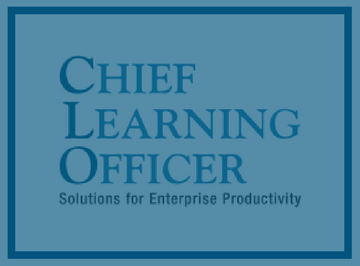Are You Taking It Personally?
Are You Taking It Personally?
A lot of chief learning officers and college administrators spend time answering two questions tied to helping people excel professionally or embrace a new educational construct. If you can learn something online, then why provide instruction in-person? And if you can teach something in-person, then why offer online instruction?
Both higher education and the corporate learning world get tripped up by these questions, which are red herrings. Consider a CLO making a policy decision about professional development plans for her company. Or take a college dean deciding how best to make courses available to adult learners. Both spend time figuring out which one of these approaches makes sense. They shouldn’t. But, first, here’s some context for why.
For 20 years, CLOs have seen a migration toward online education vis-à-vis corporate learning. In the 1990s, people touted online learning as a means of saving costs. Remember the promise of building a course once to deliver it many times? By the early 2000s, employers learned that online learning wasn’t so cost effective after all, and a fully synchronous course isn’t that cheap to build. So the training industry’s message du jour became: Online learning equals just-in-time, just enough and just-the-right content for the learner.
There is definitely a place for self-service learning. But there’s a huge and growing market for in-person learning. Take business coaching for example. Research firm IBISWorld reported last month in a Business Coaching Market Research Report that the industry generates $12 billion annually and grew 3.4 percent from 2011 to 2016. Almost every executive will tell you how important business coaching is, whether it’s done in person or by phone. Corporations see big value in having a personalized coach of some kind and using the Socratic method to help people gain a deeper understanding of whatever they’re attempting to learn.
The intersection between online and in-person learning is what I’ll call personalization. Whether learning happens online or in-person, the goal is helping a person connect with the learning that’s relevant to him or her. Some of this is based on the learner. Some relates to the topic. For instance, Grand rounds, wherein a physician presents a medical problem and specific treatment for a patient to a group of residents and medical students, occur in-person. Doctors and students, like law professors and their students, engage in the Socratic method. The line of questioning is ever-changing and conceivably this could one day be augmented by artificial intelligence. But we’re certainly not there, yet. That said, medicine is increasingly moving to a remote model where some patient education, especially follow-up on well visits, is now done online. So the question remains for educators and CLOs: Which instructional method is best for which circumstance?
Here’s my take: It’s not the right question. That’s because delivering learning is not about a choice between doing something in-person or online. Delivering learning is figuring out how to help a person engage and improve their behavior or move intellectually to a new place. The question for CLOs and educators to ask is: How does one make learning personally engaging?
Whether it’s a corporation trying to help employees grow professionally or higher education examining educational constructs, we have to begin by thinking about learning personally. The in-person versus online question is irrelevant because the answer doesn’t address how the instructor will challenge the learner’s intellectual construct. Debating the merits of in-person learning or online education misses the more important question about how best to take people to deeper levels where they achieve real personal, professional and intellectual growth.
What’s a conscientious CLO or dean to do, then, when they find their colleagues debating the merits of in-person learning versus online education? One answer lies in the fundamentals of good instructional design. Focus on the desired outcome for the training or what behavior the learning will change.
As Stephen Covey wrote, “Begin with the end in mind.” Think about whether a course of learning is knowledge-based or behavior-based. If, for example, it’s the latter, then a CLO or academic must put enough support, experience and time into designing a program to lift the learner to a higher level of knowledge.
Even with the right goal in mind and method grafted onto it, a lot of behavioral changes don’t happen in a prescribed amount of time. If changing a learner’s behavior or taking him or her to a deeper understanding is the goal, then we have to build a nexus between the instruction and the student. Engaging someone means they are taking learning personally, whether online or in-person

This column was originally published in CLO.